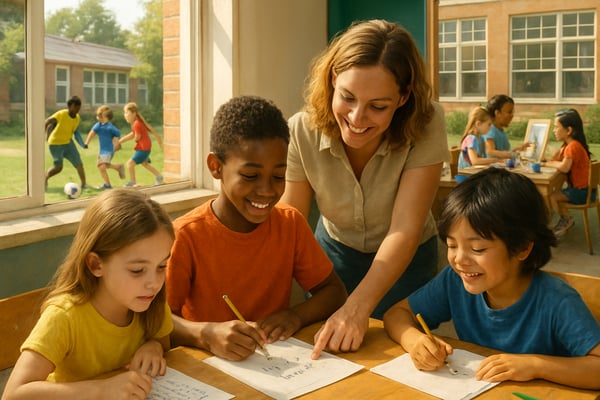Did you know that all schools across the UK need to have a sustainability lead and a climate action plan by this September?
The requirements are a key initiative of the Department of Education’s sustainability and climate change strategy in order to drive change.
A climate action plan is a detailed plan to enable an education setting, or trust, to progress or start sustainability initiatives.
Alongside the climate sustainability plan, every school needs to have a sustainability lead, which could be one person or a passionate group of diverse people from various backgrounds responsible for the plan’s development and implementation.
This should include those from leadership, teaching, the governing body, estate management and most importantly, students.

But we've already started our sustainability journey
If you have already started on your sustainability journey, congratulations!
The Department of Education recognises that schools may be at different stages and there is no need to duplicate or rip up any of your plans.
Instead, you can incorporate any initiatives you have already started into the action plan.
What are the DfE's aims?
The DfE wants to create a culture of sustainability in all schools where everyone from students to teachers will understand climate change and how we can achieve positive change by using data to identify and prioritise action.
Aims include improving energy and water efficiency, calculating carbon emissions and identifying ways to reduce them as well as overall operating costs.
They also hope to share effective practice with other education settings and develop a peer-to-peer learning network, increase resilience, start adapting to the impacts of climate change and enhance biodiversity.
Another major aim is to encourage students to develop skills and knowledge which will help them to contribute to sustainability and climate change in their lives and future careers in the green economy.
What should a climate action plan include?
According to the DfE, a climate action plan needs to cover the following four areas:
.jpg?width=1200&length=1200&name=Cleeve%20School%20(1).jpg)
Decarbonisation
A central point to decarbonisation is collecting data about your carbon emissions and then calculating and taking actions to reduce them.
One easy win is to look at becoming more energy efficient by insulating schools and using solar power either on carpark canopies or on learning and playground canopies.
Schools could also look at how students and staff travel to work and encourage car sharing, EV use by providing charging points and promote walking and cycling to school.
It could also mean introducing measures such as sourcing healthier food locally to cut carbon and reducing waste by composting and avoiding buying products with unnecessary packaging.
Adaptation and resilience
This could mean taking action to reduce the risk of flooding or overheating which could mean incorporating external blinds to classrooms to stop solar glare as the climate warms.
Instead of energy-guzzling air conditioning units, external blinds are excellent at reducing temperatures inside by 5 degrees while still allowing students to see the world outside.

Biodiversity
The DfE is keen for schools to link with the National Education Nature Park programme which empowers children and young people to improve the school grounds and nature around them as well as spending more time in nature.
The free programme aims to helps children build a connection to nature through discovery and outdoor learning as well as improve physical and mental wellbeing through spending time outdoors.
Climate change education and green careers
The plan should help children become aware of sustainability and be prepared for climate careers as well as incorporating your sustainability progress into teaching and learning.
It’s hoped that by involving children in the plan, it will empower them to gain the skills they will need in a green economy.
Where can we find further support?
The DfE has a list of resources schools and educational settings can use to help them on their way to sustainability.
To find out where to start, visit Sustainability Support for Education. The site includes a range of resources, best practice, and tools to help you develop, or build on, your climate action plan.



.jpg?width=600&height=400&name=Paddock%20SEND%20School%20-%20Spaceshade%20canopies%20with%20post%20protectors%20(6).jpg)

